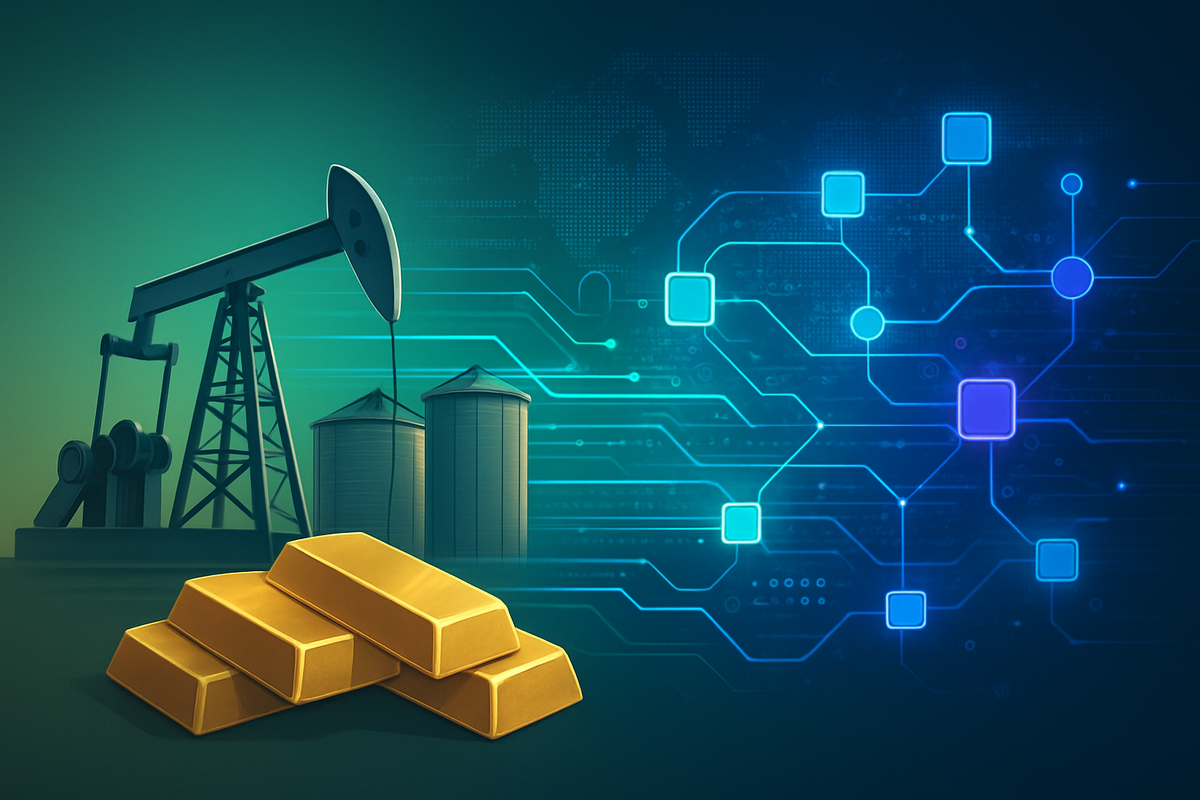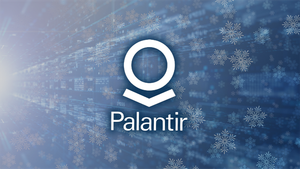
The historically opaque and often cumbersome world of commodity trading is undergoing a profound transformation, propelled by the integration of digital assets and blockchain technology. This revolutionary shift is fundamentally reshaping how raw materials, from crude oil to agricultural products, are bought, sold, and tracked, promising unprecedented levels of efficiency, transparency, and accessibility. The immediate implications are clear: reduced transaction costs, faster settlements, enhanced traceability, and a significant reduction in fraud, setting the stage for a more dynamic and trustworthy global marketplace.
As of November 19, 2025, the momentum behind this digital evolution is accelerating, with market participants increasingly recognizing the immutable, decentralized, and secure nature of blockchain as a powerful antidote to the traditional industry's inefficiencies. From the tokenization of physical assets to the deployment of self-executing smart contracts, these innovations are not merely incremental improvements but foundational changes that are redefining the infrastructure of commodity finance and logistics, with far-reaching consequences for investors, producers, and consumers alike.
The Digital Backbone: Unpacking the Blockchain Revolution in Commodities
The integration of digital assets and blockchain into commodity trading is multifaceted, extending across various critical aspects of the supply chain and transaction lifecycle. At its core, this involves the tokenization of commodities, where physical assets like gold, oil, or even bushels of corn are represented as digital tokens on a blockchain. This process, exemplified by offerings like PAX Gold (PAXG) and Tether Gold (XAUT), enables fractional ownership, democratizing access to high-value commodities and significantly boosting liquidity by allowing for 24/7 global trading. The ability to own a verifiable digital slice of a physical asset simplifies investment and reduces barriers to entry for a wider range of market participants.
Complementing tokenization are blockchain-powered smart contracts, which are self-executing agreements designed to automate various stages of a trade. These contracts automatically trigger payments, verify quality, or confirm delivery once predefined conditions are met, eliminating the need for intermediaries and manual interventions. This automation drastically cuts down on processing times, reduces human error, and streamlines complex workflows, from contract negotiation to final settlement. For instance, platforms like Vakt, a blockchain-driven post-trade processing platform for energy commodities, illustrate this by connecting participants in the physical energy market on a single, secure ledger, reducing reconciliation efforts and speeding up settlements from days to hours.
The timeline of adoption has seen a steady progression, with early pilots and consortiums forming in the mid-2010s. Major players in the energy sector, including BP (LSE: BP), Shell (LSE: SHEL), and Mercuria, alongside financial institutions like ING (AMS: INGA), have been at the forefront, investing in and piloting blockchain solutions to manage their physical commodity trades. The initial market reactions have been cautiously optimistic, with a clear recognition of the potential for cost savings and risk reduction. Regulatory bodies, such as the US Commodity Futures Trading Commission (CFTC), have also begun to provide clarity, recognizing certain digital assets like Bitcoin (BTC-USD) as commodities, further legitimizing their role in the broader financial landscape. These developments underscore a growing institutional acceptance and a concerted effort to build the digital infrastructure necessary for a truly modernized commodity market.
Winners and Losers: Navigating the Shifting Sands of Commodity Trading
The advent of digital assets and blockchain technology in commodity trading presents a clear dichotomy of potential winners and losers, fundamentally reshaping the competitive landscape. Companies that embrace and invest in these technologies early are poised to gain significant competitive advantages. Technology providers specializing in blockchain solutions, such as ConsenSys or R3, stand to win by offering the foundational infrastructure and smart contract platforms necessary for this transformation. Their expertise in developing secure, scalable distributed ledger technologies (DLT) makes them indispensable partners for traditional commodity firms looking to modernize.
Large commodity trading houses like Glencore (LSE: GLEN), Vitol, and Trafigura that actively participate in consortiums and pilot programs (e.g., Vakt for energy or Covantis for agricultural shipping) are likely to emerge as winners. By integrating blockchain, they can streamline their extensive global operations, reduce operational costs, enhance supply chain visibility, and mitigate risks associated with fraud and disputes. Their existing market dominance, combined with technological adoption, will solidify their positions. Similarly, financial institutions like ING (AMS: INGA) and Societe Generale (EPA: GLE), which are actively providing crypto asset custody and execution services, will benefit from facilitating these new digital commodity trades, expanding their service offerings and client base.
Conversely, traditional intermediaries such as certain brokers, clearinghouses, and manual verification service providers, whose primary function is to provide trust and facilitate transactions through labor-intensive processes, may find their roles diminished or entirely disrupted. As smart contracts automate these functions and blockchain provides inherent trust and transparency, the need for these human-centric intermediaries will decrease, potentially leading to consolidation or a forced pivot towards offering more specialized, value-added services. Furthermore, companies that are slow to adapt or resist the shift to digital platforms risk being left behind, facing higher operational costs, reduced efficiency, and a struggle to compete with more agile, digitally-enabled rivals. The investment required for this digital transformation can also be a barrier for smaller players, potentially exacerbating market concentration among the early adopters.
Beyond the Ledger: Wider Implications and Market Restructuring
The integration of digital assets and blockchain into commodity trading extends far beyond mere operational efficiencies; it signifies a profound restructuring of market dynamics, with wider implications for industry trends, regulatory frameworks, and competitive landscapes. This event is not an isolated phenomenon but rather a critical component of a broader trend towards the digitization and decentralization of financial markets, mirroring similar shifts seen in equities and traditional finance. The move towards tokenization and immutable ledgers aligns with increasing demands for Environmental, Social, and Governance (ESG) compliance, as blockchain offers unparalleled traceability for verifying the provenance and ethical sourcing of commodities—a crucial factor for consumers and regulators alike.
Potential ripple effects on competitors and partners are substantial. Companies that successfully implement blockchain solutions will likely set new industry standards for speed, cost, and transparency, compelling competitors to follow suit or risk obsolescence. This could foster an ecosystem of specialized blockchain service providers and integrators, creating new partnership opportunities while challenging established relationships with traditional service providers. For example, logistics firms that can integrate blockchain-based tracking solutions will become more attractive partners, enhancing the overall efficiency of the supply chain.
Regulatory and policy implications are perhaps the most complex aspect. While the CFTC has acknowledged certain digital assets as commodities, a comprehensive global regulatory framework specifically for tokenized commodities and blockchain-based trading is still evolving. Jurisdictions are grappling with issues such as legal certainty for smart contracts, custody of digital assets, market manipulation risks, and cross-border regulatory harmonization. The lack of uniform regulations could create regulatory arbitrage opportunities or, conversely, stifle innovation in regions with overly restrictive policies. Historically, similar technological shifts, such as the introduction of electronic trading platforms in the late 20th century, faced initial regulatory skepticism but ultimately led to the development of robust frameworks that facilitated market growth and integrity. The current situation with blockchain in commodities is reminiscent of these early stages, requiring careful navigation and collaborative efforts between industry and policymakers.
The Road Ahead: Navigating the Future of Commodity Trading
Looking ahead, the trajectory of digital assets and blockchain in commodity trading points towards a future characterized by both immense opportunities and significant challenges. In the short term, we can anticipate a continued surge in pilot programs and consortiums, with more industry players experimenting with tokenization, smart contracts, and decentralized platforms. The focus will likely be on ironing out technical interoperability issues between different blockchain networks and integrating these new systems with legacy infrastructure. We may also see the emergence of more specialized digital commodity exchanges, offering enhanced liquidity and price discovery for tokenized assets.
In the long term, the possibilities are transformative. A fully integrated, blockchain-powered commodity market could lead to near-instantaneous settlements, drastically reduced counterparty risk, and a global, 24/7 trading environment accessible to a much broader range of participants. This could unlock new forms of financing for producers and provide innovative hedging strategies for consumers. Potential strategic pivots will include traditional commodity firms investing heavily in digital talent and infrastructure, potentially acquiring blockchain startups, or forming joint ventures to accelerate their digital transformation. Market opportunities will emerge in areas such as decentralized finance (DeFi) for commodities, allowing for collateralized lending and borrowing against tokenized assets, and new data analytics services built on the transparent, immutable data generated by blockchain ledgers.
However, significant challenges remain. Regulatory clarity is paramount; without harmonized global standards, widespread adoption will be hampered. Scalability of blockchain networks to handle the immense volume of global commodity trades is another technical hurdle that needs continuous improvement. Furthermore, cybersecurity risks associated with digital assets and blockchain platforms will require robust solutions and ongoing vigilance. Potential scenarios range from a gradual, phased integration where blockchain coexists with traditional systems, to a more radical overhaul where digital assets become the dominant medium for commodity transactions. Investors should watch for key indicators such as increasing institutional adoption, advancements in regulatory frameworks, successful large-scale implementations by major players, and the development of robust, user-friendly platforms as signals of continued progress and market maturation.
A New Dawn for Commodities: Key Takeaways and Future Watch
The integration of digital assets and blockchain technology into commodity trading marks a pivotal moment, signaling a new dawn for an industry historically characterized by its complexity and opacity. The key takeaways from this ongoing transformation are clear: unparalleled gains in efficiency through automation and reduced intermediaries, and a dramatic enhancement in transparency driven by immutable, verifiable records and end-to-end traceability. These advancements are not merely theoretical but are already yielding tangible benefits, such as faster settlements, lower transaction costs, and a significant reduction in fraud and disputes across the supply chain.
Moving forward, the market is poised for continued evolution, with blockchain and digital assets becoming increasingly integral to the operational fabric of commodity trading. While challenges related to regulatory harmonization, technological scalability, and cybersecurity persist, the underlying benefits are too compelling for the industry to ignore. The market will likely see a continued push towards standardization and interoperability, fostering a more connected and efficient global trading ecosystem.
The lasting impact of this digital revolution will be a more resilient, accessible, and trustworthy commodity market. It will empower producers with better financing options, provide consumers with greater assurance of product origin and quality, and offer investors new avenues for participation and risk management. Investors should closely monitor the progress of major industry consortiums, the development of clearer regulatory guidelines from bodies like the CFTC, and the successful deployment of large-scale blockchain solutions by leading commodity houses and financial institutions. These will be critical indicators of the market's maturation and the sustained trajectory of digital innovation in the world of commodities.
This content is intended for informational purposes only and is not financial advice






